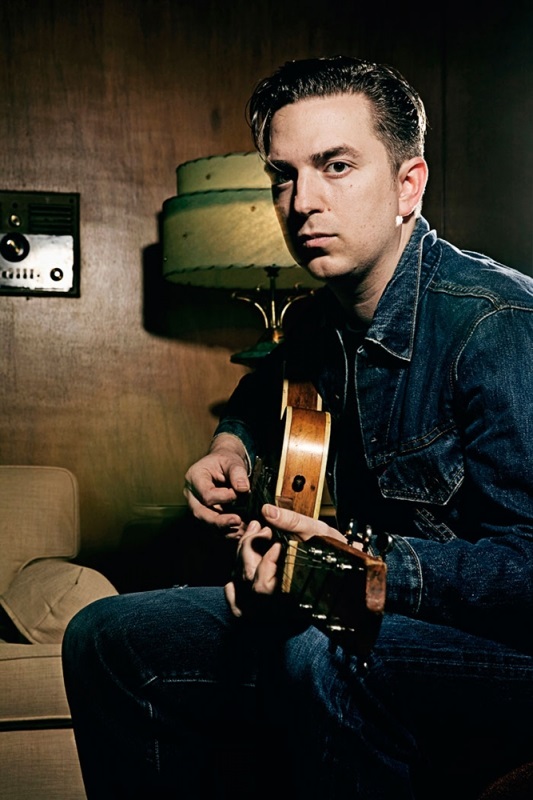Just An Oklahoma Boy: An Interview with JD McPherson
Music Interviews
Anytime someone tries to invoke the sounds and styles of the past they run the risk sacrificing their originality to the roots music gods. It’s a brave thing to tread in the same territory as the initial innovators and remain firmly planted on your own two feet. So for JD McPherson put together an album like his first solo effort Signs and Signifiers is quite the accomplishment. It not only expresses his personality and viewpoint, but it gives rejuvenation to the early rock n’ roll sounds through well-crafted songs with tremendous melodies and rhythms to shake to. What followed the release of the record was a slow burn toward what would become a powder keg, exploding McPherson onto the national scene and late-night TV, and some even more unlikely places.
Mcpherson was gracious enough to answer some of my questions about how it all came together and how he would be moving forward, and he gave me a musical education about his home state of Oklahoma.
SLUG: Where does your love of roots music begin?
JD McPherson: I’m a big fan of all kinds of music, and I really do mean all kids of music. It would probably bum so people out to find out how wide of a range I’m into. But being a fan of rock n’ roll seems to always lead to where it all started, and even further into the blues and hillbilly music, which might even lead you to all kinds of folk music. The stuff that got me excited was the early rock n’ roll stuff—it’s really primitive and primal and fun to me. That music also tunes into my Oklahoma country boy side. I could relate to a singer from Lubbock, Texas easier that a bunch guys in band from Queens, New York.
SLUG: You’re always proud to stand up and say you’re proud to be from Oklahoma. How does your being from Oklahoma inform your music?
McPherson: You’re going to have to excuse my diatribe about Oklahoma, which is a young state—it wasn’t made a state until 1905. Until then, it was where the five civilized tribes were relocated to, so it comes with its own set of baggage, but it’s a geographical/cultural anomaly. Part of it is desert, part of it is like the Ozark mountains. Some people, like my mother, identify as Southern, some people don’t. You may not think of any place in Oklahoma like you think of Chicago, Nashville or Memphis—as music destinations—but people like Wanda Jackson, Chet Baker, Charlie Christian and even Eddie Cochran was originally an Oklahoma cat. When Eric Clapton quit Cream, his whole band was recruited out of Tulsa. So I was surrounded by music growing up, by pickers out in the sticks, and my parents were really into music as well. People ask me all the time and seem to expect me to pick [up] and move to some place like Chicago or L.A., but I’m happy to stay here in Oklahoma.
SLUG: What does it mean to you to be compared to legends like Little Richard?
McPherson: It’s nothing but an honor to be compared to those people. Especially on the first record, the influences are sewn right there on the sleeve for everyone to see, so for me to deny that Little Richard was a huge inspiration would be ludicrous. “Keep A-Knockin’” and “Slippin’ and Slidin’” are like enthusiasm in pill form. If he comes on the radio then all of the sudden, before you know it, you’re punching the dashboard and driving 90 miles an hour.
SLUG: How did you and producer/bass player Jimmy Sutton start working together?
McPherson: Our introduction was the seeds of the first record. We both had different bands, but had a mutual admiration—he’s a wizard bass player. He’d been putting together this recording studio, Hi-Style, in his attic for a long time and he decided on me to be the first record he wanted to do out of there. We had very similar ideas about what we wanted to accomplish and at first, Jimmy was just going to produce and play on the record. We were just using his house guys as a backing band, but over the course of working together and the record beginning to materialize, he approached me about wanting to be in a band with me and, as talented as he is, there was no way I was going to say no.
SLUG: Did you expect any of the success that came after Signs and Signifiers was released?
McPherson: It was completely unexpected! We knew it would probably do well amongst the vintage music scene that not everyone is aware of, but beyond that we had no idea. We knew that it was different and that we threw in some different influences and that the lyrics weren’t typical, but we had no idea that a year later we’d be playing on late-night TV.
SLUG: What did you think when you guys started popping up on CMT?
McPherson: Well, there are some really cool folks that work at that station that love our band so much that they put up every video that we made. That was huge for us and we were able to reach a whole other audience through that. I’m a big fan of country music, and no, we don’t really have any of the instrumentation of a country band. I shouldn’t say this, but we’re probably closer to the real stuff than some of the bands.
SLUG: Are you nervous to follow up Signs and Signifiers after all the success it had?
McPherson: All the recording of our new record is done. We’re trying to move forward and I’m sure we went further than some people wanted us to, but there isn’t anything one there that can’t be called rock n’ roll. I’m very proud of it. We used an outside producer named Mark Neil who worked with rockabilly guys like Deke Dickerson and Big Sandy, but then he also has worked with indie bands like the Black Keys, so he was an obvious choice for us. The rough mixes that we’ve heard so far are so blazing, they’re just frying our brains.
SLUG: What can we expect from the JD McPherson live show?
McPherson: I am so lucky to have the band of heavy hitters behind me. We put every ounce of energy into our live show. There’s nothing cartoony about it—we just shoot straight down the barrel and play honest rock n’ roll. What we like to see is when we play a town and come back the audience has grown—that’s how we now we’re doing our jobs.
It seems as though it’s all too good to be true: honest-to-goodness rock n’ roll played by real musicians and a front man that plays with all the passion and pride he can muster each night. Well, if I can’t convince you here, head down to the State Room on April 19 and let the truth set you free.


